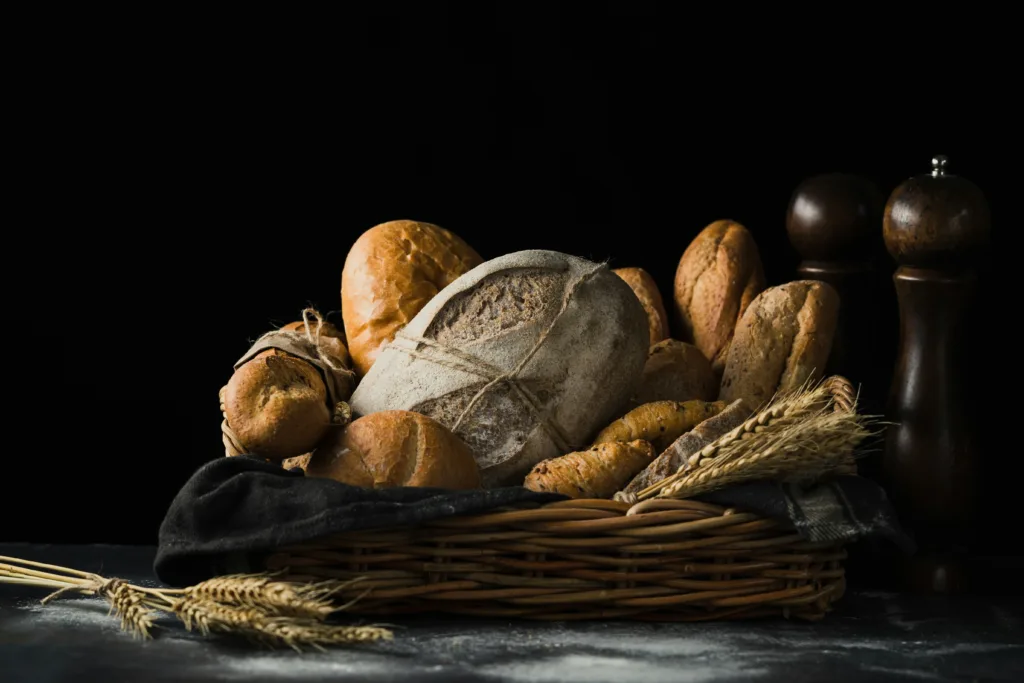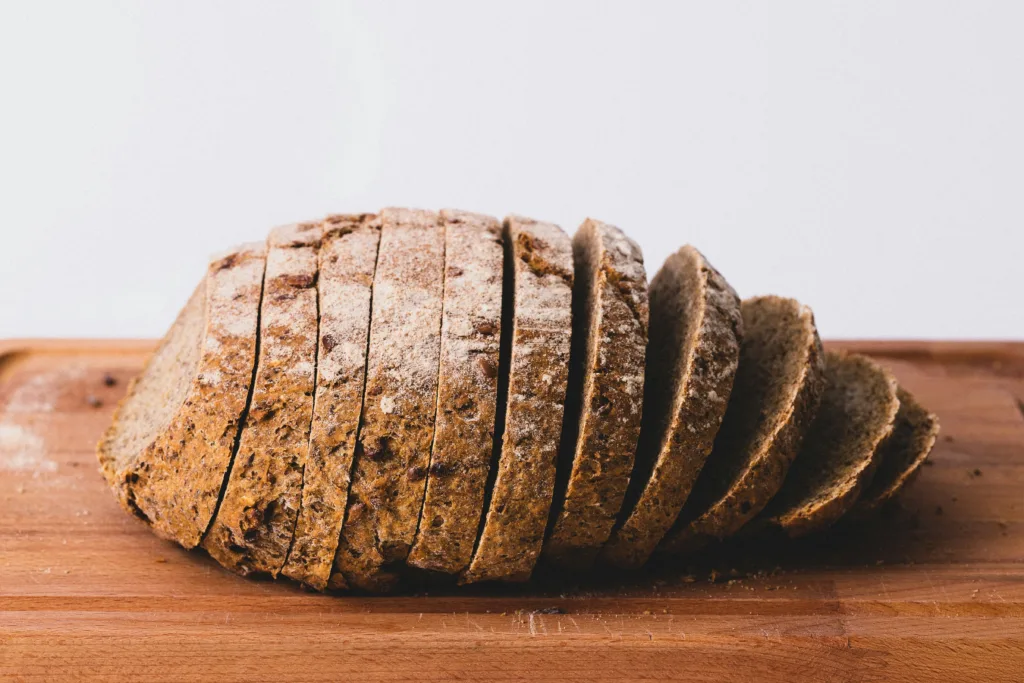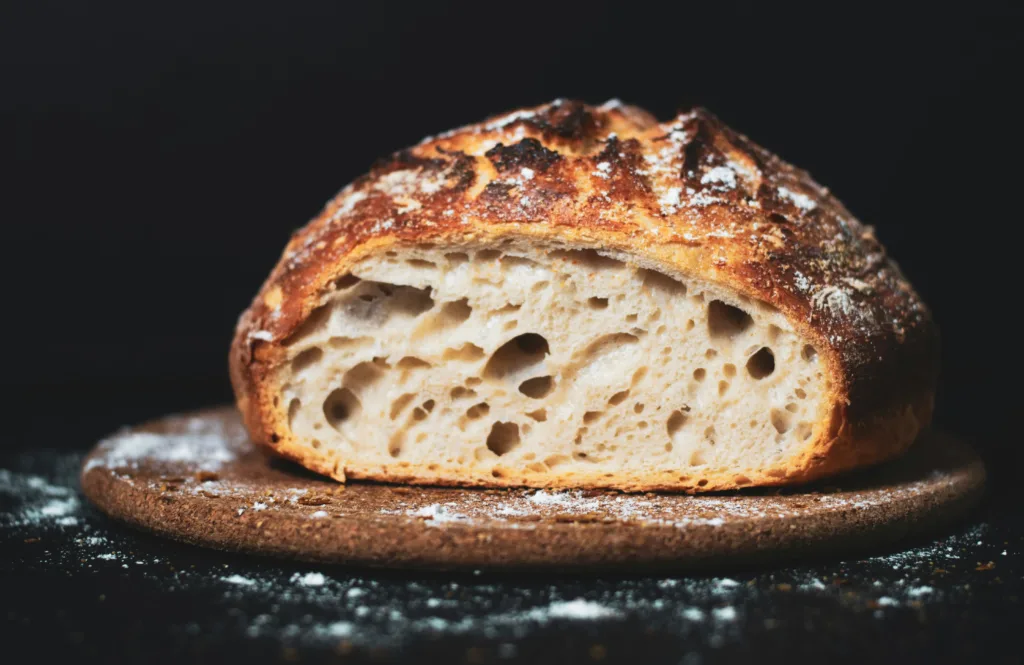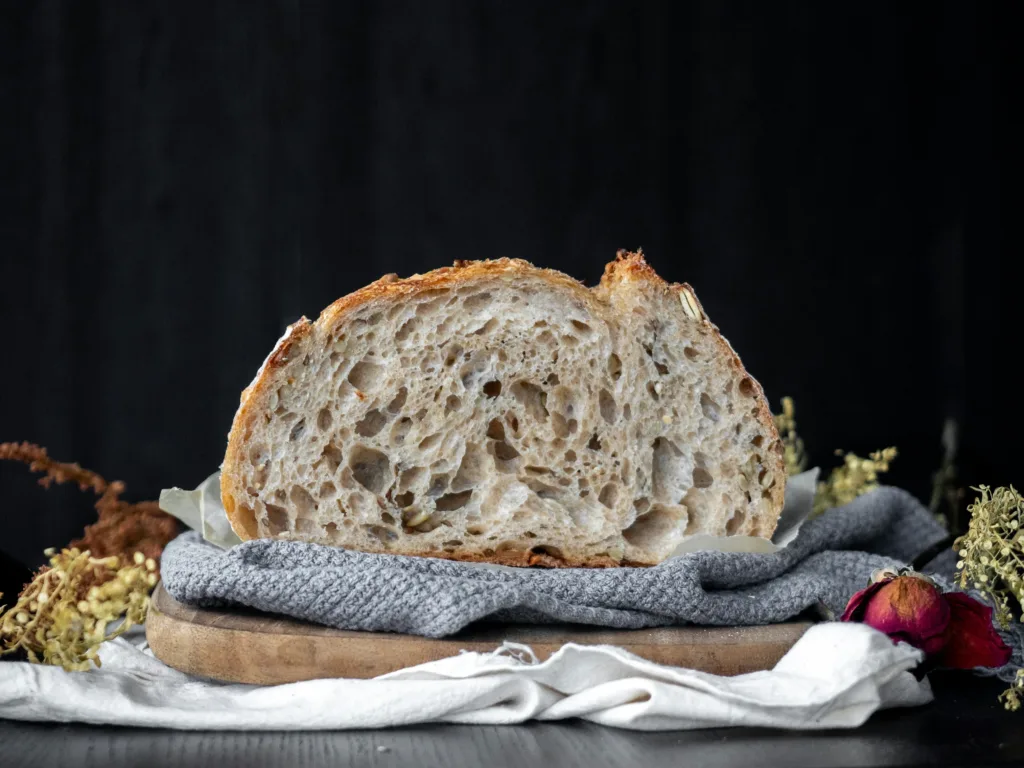Hey, bread gets a bad rap sometimes, right? People think it’s all empty carbs, but pick the right loaf and it’s actually a powerhouse for your body. We’re talking options loaded with whole grains, fiber, and even some sneaky protein that keep you full and energized without the blood sugar rollercoaster. From my digs into what nutrition pros say, stuff like sprouted whole grain or rye can make a real difference in your daily eats, helping with everything from gut health to keeping heart issues at bay. It’s not about ditching bread altogether – it’s about swapping in the smarter choices that taste great too. I’ve tried a few myself, and let me tell you, a fresh slice of sourdough with avocado? Game-changer on a busy morning.
Speaking of making smarter food choices easy, that’s where an app like ReciMe comes in handy. If you’re like me and have recipes scattered everywhere – from Pinterest saves to grandma’s old notes – our app pulls them all into one spot on your phone. You can snag ideas for baking your own healthy breads or whipping up sandwiches with these top picks, and it even sorts your grocery list by aisle so you’re not wandering the store aimlessly. Plus, with meal planning built right in, you can slot in a sprouted grain toast for breakfast or a rye wrap for lunch without the hassle. It’s trusted by over 5 million folks who swear it reignited their love for cooking, and honestly, once you try it, you’ll wonder how you managed without. Download it free and see how it turns those healthy bread ideas into actual meals on your table.


What Makes Bread Healthy Anyway?
Figuring out what makes a loaf actually good for you can feel like navigating a grocery store maze, but it’s simpler than it seems. Healthy breads are all about whole grains – think oats, rye, or sprouted wheat – that keep the full grain intact for maximum fiber, vitamins, and minerals. Fiber is the star here, slowing digestion to keep blood sugar steady and you full longer, perfect for a busy day. Look for minimal ingredients, like just flour, water, salt, and maybe a natural starter, to dodge the junk like added sugars or weird preservatives. For menus, picture starting the day with whole-grain toast topped with smashed avocado and a sprinkle of seeds for breakfast, packing in fiber to kick things off right. Lunch could be a hearty rye sandwich with lean turkey and crisp veggies, balancing carbs and protein to power through the afternoon. Dinner might feature a side of homemade sourdough with a veggie-packed soup, letting that fermented goodness support digestion while keeping things cozy and satisfying.

Our Top 10 Picks for Healthiest Breads
1. Ezekiel Bread
Ezekiel bread is like the overachiever of the bread world, made from sprouted whole grains like wheat, barley, spelt, and millet, plus a sprinkle of legumes like lentils and soybeans. The sprouting process gives it a leg up, making nutrients like iron and calcium easier for your body to grab while keeping blood sugar spikes in check. It’s got a dense, chewy texture with a nutty flavor that feels hearty without being heavy. Whether it’s toasted or fresh, this loaf is a go-to for anyone wanting a wholesome bite that fuels the day right. It’s the kind of bread that makes you feel like you’re doing your body a favor with every slice.
2. Pumpernickel
Pumpernickel is that dark, moody loaf with a tangy edge that makes you want to linger over it. Crafted from coarse wholegrain rye flour, often with a sourdough starter, it’s packed with fiber and resistant starch that’s kind to your gut. The deep, almost earthy flavor and dense texture give it a rustic charm that’s hard to beat. It’s not your average bread – it’s got a bold personality that stands out, whether paired with savory spreads or used to soak up a hearty soup. This is the loaf for those cozy nights when you want something substantial that still feels good to eat.
3. Rye Bread
Rye bread brings a dense, earthy vibe that’s all about keeping things real. Made from 100% rye flour, it’s lower in gluten than wheat, giving it a heavier, more satisfying chew. It’s loaded with lignans, those plant compounds that support heart health and more, plus a nutty flavor that’s subtle but distinct. This bread feels like it’s been a staple forever, with a texture that holds its own against bold toppings. It’s perfect for anyone who loves a loaf that’s straightforward yet packed with character, ready to elevate any meal with its old-school charm.
4. Wholemeal Wheat Bread
Wholemeal wheat bread is the reliable friend you can always count on, using the entire grain – bran, germ, and endosperm – for a nutrient-packed punch. Its soft, slightly chewy texture and mild flavor make it a versatile pick that plays well with anything from sweet to savory. It’s got a wholesome vibe, delivering fiber and vitamins without any fuss, and it’s forgiving enough for beginner bakers to whip up at home. This loaf is for those days when you want something simple but nourishing, the kind of bread that feels like a warm handshake in every bite.
5. Buckwheat Bread
Buckwheat bread, made from gluten-free buckwheat seeds, is a quiet star with a subtle, nutty taste that sneaks up on you. It’s got a dense but smooth texture and boasts antioxidants like rutin, plus a compound that helps keep blood sugar steady. Perfect for those dodging gluten, it’s a loaf that doesn’t compromise on flavor or nutrition. Its understated charm makes it a great match for both bold and mild toppings, offering a wholesome base that feels like a discovery every time you slice it. This bread’s got a way of making you appreciate the simple stuff.
6. Spelt Bread
Spelt bread, a wheat relative, brings a chewy, slightly nutty bite with a bit more protein than your standard loaf. Its lower phytic acid means your body can soak up more of its vitamins and minerals, like a little gift to your system. The texture is rustic, with a firmness that holds up well, and the flavor has a cozy, old-world feel. It’s the kind of bread that makes you want to bake it yourself just to smell it fresh from the oven. Spelt’s unique vibe is perfect for anyone craving a loaf that’s both hearty and easy on the gut.

7. Sourdough
Sourdough is the cool kid of breads, with its tangy flavor and chewy crust that’s hard to resist. Made with just flour, water, salt, and a natural starter, its long fermentation process makes nutrients more available and digestion a breeze. The gut-friendly polyphenols add to its charm, giving it a wholesome edge that’s as tasty as it is smart. Every bite feels like a little celebration of flavor, whether it’s fresh or toasted. This loaf is for those moments when you want bread that’s got personality and a health boost to match.
8. Soda Bread
Soda bread, a yeast-free Irish classic, keeps things simple with flour, buttermilk, baking powder, and salt. Its crumbly, rustic texture and mild flavor make it a comforting addition to any spread. It’s light on fat and quick to whip up, perfect for those who want a no-fuss loaf that still feels homemade. The slightly dense bite has a charm that’s hard to beat, like a nod to simpler times. This bread’s straightforward vibe makes it a great pick for anyone looking to keep things easy and wholesome.
9. Flaxseed Bread
Flaxseed bread is a nutty, slightly crunchy loaf that sneaks in heart-healthy omega-3s and lignans thanks to those tiny flaxseeds mixed into wholemeal flour. Its flavor is subtle but rich, with a texture that’s satisfying without being too heavy. It’s the kind of bread that feels like it’s quietly working for your health while still tasting great. Whether fresh or toasted, it adds a little extra love to any meal. This loaf is a solid choice for anyone who wants their bread to bring more to the table than just carbs.
10. Porridge Oat Bread
Porridge oat bread mixes oats into wheat flour for a slightly sweet, fiber-heavy loaf that’s got a soft, hearty texture. The beta-glucan in oats is a win for keeping cholesterol and blood sugar in check, making it a smart pick for everyday eating. Its gentle sweetness and cozy vibe make every slice feel like a warm hug from your kitchen. It’s forgiving enough to pair with anything, from savory spreads to sweet toppings. This bread’s got a way of making you slow down and savor the moment.

Busting Bread Myths
Man, bread sure takes a beating in diet talks, doesn’t it? People act like it’s the villain behind every extra pound or energy dip, but that’s not the full story. Let’s unpack a few common myths and set things straight, because once you know the facts, it’s easier to enjoy bread without the guilt trip.
- All bread causes wild blood sugar swings: Nope, not if you go for whole-grain or sprouted varieties. These digest at a slower pace thanks to their fiber content, giving you steady energy instead of a crash. Refined white bread might do that, but options like rye or sourdough keep things even-keeled, which is a relief for anyone watching their levels.
- Gluten-free bread is automatically healthier: This one’s tricky. Sure, if you’ve got celiac disease or a sensitivity, gluten-free is a must. But for the rest of us, many gluten-free loaves are made with refined flours and extra sugars to make up for the texture, so they might not stack up nutrient-wise against a solid whole-wheat or spelt bread. It’s about checking labels, not assuming the label alone makes it better.
- Bread is just empty carbs with no real benefits: Come on, that’s selling it short. Whole grain breads bring fiber, B vitamins, and even some protein to the party, helping with everything from digestion to heart health. The key is skipping the ultra-processed stuff loaded with additives – think emulsifiers or extra sugars – and sticking to simpler loaves. I’ve noticed how a good slice can actually make a meal more filling and balanced, turning skeptics into fans.
- You have to cut bread to eat healthy: Total myth. Moderation and smart choices let bread fit right in. For instance, swapping refined for fermented or sprouted types can even support gut health through things like resistant starch. It’s all about balance, not bans, and honestly, life’s too short to skip a fresh loaf entirely.
Clearing up these ideas opens the door to smarter menus. Imagine starting your day with sprouted grain toast topped with nut butter and fruit, showing carbs can fuel you right. Lunch might be a rye wrap with veggies and hummus, no drama on the energy front. Dinner could wrap up with sourdough beside a stew, proving bread belongs in a well-rounded plate when you pick wisely.

Ways to Enjoy These Breads in Your Meals
Who says healthy bread has to be dull? These loaves are like kitchen MVPs, ready to jazz up your day from morning to night. Get playful with pairings and watch how they turn basic eats into something you actually look forward to. Here’s a breakdown by meal time, with some ideas to spark your own twists – because everyone’s fridge is a little different, right?
Breakfast Boosts
Kick things off with flaxseed bread toasted and layered with cream cheese, smoked salmon, and a dash of lemon – it’s got that omega-3 kick to wake you up properly. Or try Ezekiel bread with a spread of yogurt and berries; the sprouted grains add a chewy contrast that makes mornings feel more substantial. If you’re in a rush, a slice of oat bread with a quick egg scramble keeps it simple but nourishing, proving bread can be your easy ally first thing.
Lunch Ideas
Midday meals shine with spelt bread as an open-face base for grilled chicken, arugula, and a light olive oil drizzle – light, filling, and full of texture. Pumpernickel makes a killer wrap with roasted peppers, feta, and olives, its density holding everything together without falling apart. For something cooler, buckwheat bread pairs nicely with tuna salad and greens, offering a gluten-free option that’s still hearty and fresh.
Dinner Delights
Evenings are prime for oat bread turned into croutons over a chili or salad, soaking up juices while sneaking in extra fiber. Sourdough’s tang complements a lentil stew or grilled fish, making the meal feel complete and cozy. Don’t overlook soda bread beside a veggie stir-fry; its rustic crumb adds a comforting touch without overwhelming the plate.
Snack Time Wins
Between meals, a quick rye bite with guacamole or cheese keeps hunger in check and nutrients flowing. Flaxseed bread with a smear of hummus and cucumber slices is portable and satisfying, ideal for on-the-go moments. The real magic? These breads adapt to whatever you’ve got handy, like leftover veggies or a bit of fruit, turning snacks into mini meals that don’t feel like an afterthought.
It’s funny how versatile these breads are – they mesh with your routine, making wholesome eating less of a chore and more of a habit you stick with.
Wrapping It Up
So, there you have it – bread doesn’t have to be the bad guy in your kitchen. We’ve chatted about what makes a loaf truly healthy, busted some myths that keep popping up, and shared ways to weave these better-for-you options into your everyday meals. From sprouted grains that feel like a nutrient boost to tangy sourdough that’s easy on the gut, the key is picking whole, minimally processed types that fit your life. It’s all about balance, right? Enjoying a slice without overthinking it, while knowing you’re giving your body some good stuff along the way. Next time you’re at the store or firing up the oven, grab one of these and see how it levels up your routine. Who knows, you might even start looking forward to that morning toast a little more.
FAQs
What’s the easiest way to tell if a bread is healthy?
Look at the label for whole grains as the first ingredient, and aim for at least a couple grams of fiber per slice. Skip ones with long lists of additives or sugars – shorter is usually better. It’s not rocket science; just flip the package and check if it feels straightforward.
Is homemade bread always healthier than store-bought?
Not necessarily, but it can be if you control the ingredients, like using wholemeal flour and skipping extras like preservatives. Store-bought can be fine too, especially from bakery counters, as long as you pick wisely. The real win is knowing exactly what’s in it when you make your own.
Can I eat healthy bread if I’m watching my carbs?
Sure, many of these options, like sprouted rye or flaxseed, have a lower impact on blood sugar thanks to their fiber. Portion it out and pair with proteins or veggies to keep things balanced. It’s about fitting it in, not cutting it out completely.
Which healthy bread is best for beginners to try?
Start with sourdough – it’s got that familiar taste with a tangy twist, and the fermentation makes it easier to digest. From there, branch out to rye or oat bread for variety. Experiment a bit; you might surprise yourself with a new favorite.
